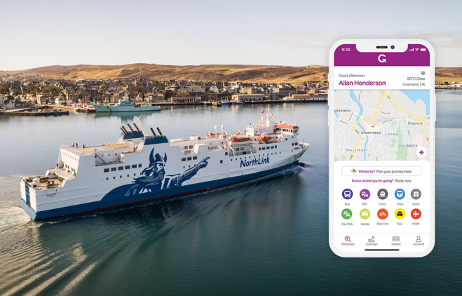We have just left 2022 behind with a lot of big wins in what we call Future Transport and have seen gains in the push towards modal shift.
2022, It’s a Wrap!

Best DRT Implemented Worldwide
More and more flexible on-demand shuttles are going to support the traditional transport services in Germany. In the Rhine-Main region, Rhein-Main-Verkehrsverbund (RMV) and Deutsche Bahn (DB), together with local partners, have been implementing Germany’s largest on-demand service. In 2023, the first autonomous on-demand vehicles are to be put on the road in the RMV area and will significantly strengthen the public transport service in the area.
Together, RMV and DB want to roll out the world’s first autonomous shuttle fleet, which is to be fully integrated into regular public transport operations. The DB technology company ioki is to supply the on-demand software and CleverShuttle, together with local partners Heag mobilo and kvgOF, is to implement the on-site operation.
The use of on-demand bus services in Germany has been on the rise for the past couple of years. A recent industry survey by the VDV also shows that on-demand services in public transport are becoming established everywhere, even outside the major cities and conurbations: according to the survey, 47 percent of all on-demand services are operating in rural areas and small towns, 26 percent in medium-sized and large cities, 14 percent in suburban areas and 13 percent in urban areas.
Best DRT in the UK
During the early stages of the pandemic, Transport for Wales (TfW) decided to try something new. In May 2020 they launched fflecsi, an app-based service that allows people to book a shuttle minibus from “floating bus stops” near their homes directly to their destination.
Now available in 11 locations across Wales, the service was an immediate hit: in five weeks passenger numbers grew 150%, and in its first 12 months it served 50,000 trips. Best of all, 9% of its riders were people who hadn’t previously used public transport. As one passenger said: “This is too good to be true. This is Pembrokeshire, we don’t get transport like this.”
Wales wasn’t the only place experimenting with demand-responsive transport (DRT). Pilot DRT projects also sprang up in the suburbs of Munster in Germany, Osaka in Japan and Lone Tree in Colorado.
In Lincolnshire, the rural DRT service CallConnect is now in its second decade. Most users are elderly people and students, and Stuart Eccles, Lincolnshire’s senior transport officer, says that without it many people would struggle to travel, relying instead on lifts from neighbours or friends, or “very expensive” taxis.
Eccles says the recent introduction of an app has increased the number of last-minute bookings, which he sees as the technology offering users more freedom and control. While the telephone option will remain for older customers, he says the app data provides vital insight into users’ needs and on potential improvements.
Many UK cities are implementing DRT pilots and testing how these can be best connected with current public transport lines to serve rural or low density areas and reduce social exclusion.
Biggest Step in Sustainable Transport?
There are so many things going on in the transport world, from electric planes to low emissions hydrogen trains.
However, in Finland there has been a particular dedication to developing self-driving technology.
The EIB financed the firm Sensible 4 with €8 million to boost self-driving technology, which will help reduce traffic accidents, high-emissions vehicles and carbon dioxide, providing a future solution to the shortage of public transport and logistics drivers in Europe.
This technology has so many use cases and applications, for example, the software enables vehicles to operate under the most challenging weather conditions, reduces the number of accidents on the roads, and provides a solution to the shortage of public transport and logistics drivers.
This could become a life changing technology when implemented on a large scale, and with such a big investment behind it R&D can be accelerated to reach adoption sooner. Really looking forward to seeing this project grow.
Biggest Investment?
A new metro for sustainable commuting in Alexandria and Cairo, Egypt The EIB has signed the second tranche of a €1.1 billion loan to finance metro and tram projects in Alexandria and Cairo, the two biggest Egyptian cities. The project includes the extension of the existing Cairo Metro line 3, partly financed by the Bank, and 23 kilometres of metro line 2 to improve the city’s public transport links. The lines are air-conditioned and equipped with automated driving and help reduce road traffic and greenhouse gas emissions. In Alexandria, the plan is intended to improve current urban mobility, converting 22 kilometres of railway into a metro system. The metro network in Cairo currently carries several million people every day, providing them with a sustainable solution to battle pollution, traffic jams and delays.
These investments will lead to a greenhouse gas emissions reduction due to the expected modal shift, and will therefore contribute to the Bank’s climate action objective, as well as to the implementation of Egypt’s Intended Nationally Determined Contributions (INDCs), as defined in the Paris Agreement on Climate Change of December 2015.
WeDRT Top Hits:
Biggest achievement – Winning an additional 5 DRT contracts across the UK (more about these launches in the coming months).
Best moment – COP27: Our CEO and Founder, Daniel Mould, had the pleasure to speak in the Green Zone at COP27 in Sharm El Sheikh. Watch a clip of it here.
Conclusion:
We are seeing a lot more investment from governments and large companies towards sustainable transport, focusing on reducing CO2 Emissions is a key target worldwide and as we saw during the COP27, changing the way we travel is the single act that will massively impact these emissions.
Investing in sustainable transport does not only impact a country’s emissions but also improves social exclusion and makes public transport more accessible to everyone.
At WeDRT we are committed to improving the global transport network by adding on-demand buses interlinked with the current public services, leading to an unprecedented transport network that will beat single-occupancy car use, making it the preferred decision.
On a personal level our team has committed to reducing their carbon footprint by making small and bigger changes to their everyday lives. Using a combination of active and public transport as well as electric personal vehicles is only one of the resolutions we are setting ourselves to achieve in 2023. Join us on the mission to decrease CO2 emissions by choosing a sustainable transport option when possible.
This article was originally published by WeDRT.



